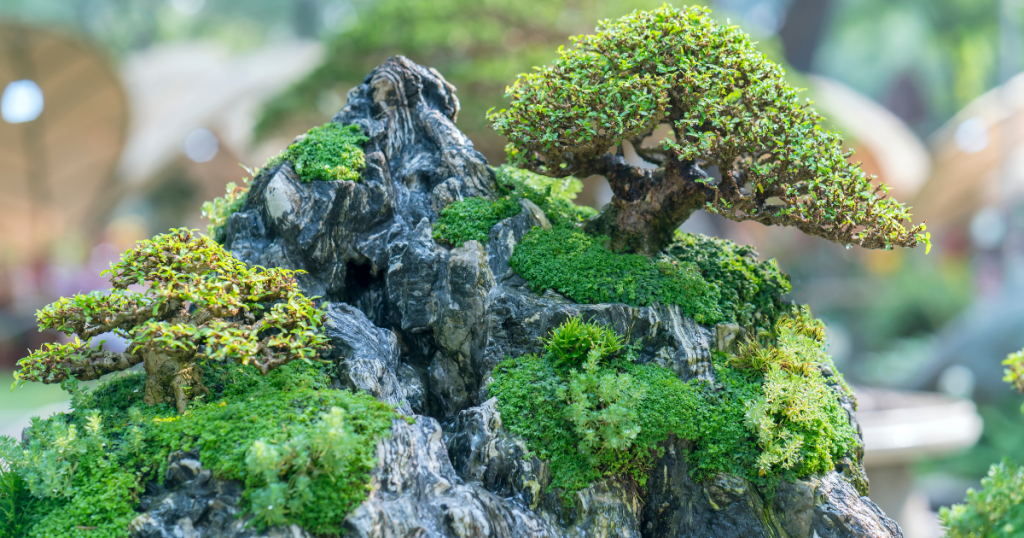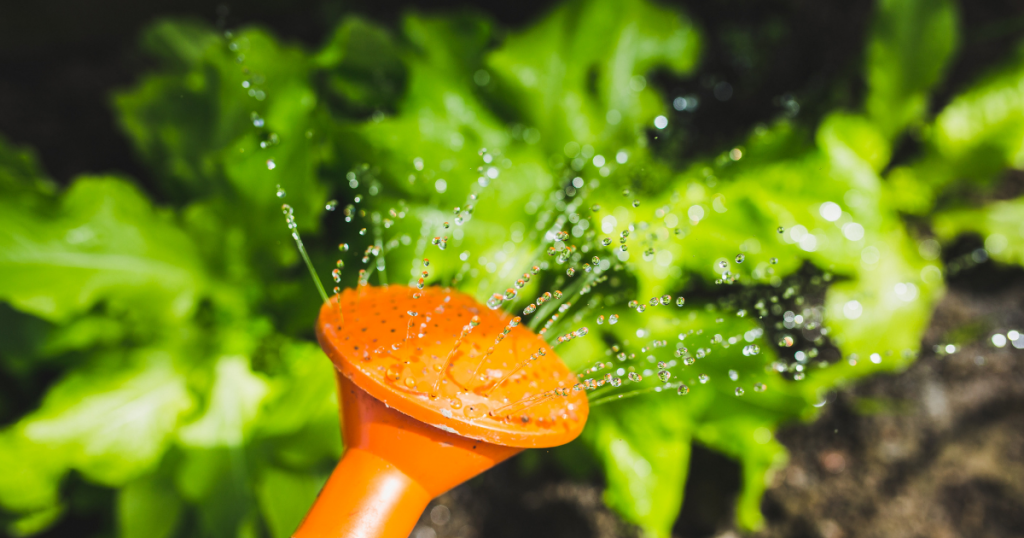
Bonsai trees are more than just a hobby or a collection of plants – they are a symbol of balance, harmony, and the natural beauty of the world. These miniature trees, which are trained and shaped over time to create a specific aesthetic, are a beloved element of Asian culture and are enjoyed by gardeners and enthusiasts around the world. In addition to being a rewarding hobby, bonsai trees can also be a beautiful and unique element of home decor.
Decorating with bonsai trees can add a touch of tranquility and beauty to your home, and can be a great way to bring a little bit of nature indoors. Whether you have a large collection of bonsai trees or just one or two special specimens, there are many ways to incorporate bonsai trees into your home decor. In this blog, we will provide you with a guide to decorating bonsai trees, including tips on choosing the right tree, finding the perfect location, and maintaining your bonsai collection.
Whether you are a beginner or an experienced bonsai enthusiast, there is a bonsai tree that is perfect for you. So why not get started today and bring a touch of the ancient and revered tradition of bonsai into your home? With a little bit of care and attention, you can create a beautiful and thriving bonsai display that will bring a touch of beauty and tranquility to your home.
When it comes to decorating bonsai trees, choosing the right tree is key. Different bonsai trees have different care and training requirements, and it is important to choose a tree that is suitable for your specific environment and that fits your style and preferences. Here are some tips for choosing the right bonsai tree:
Consider your climate and location: Different bonsai trees have different temperature and humidity requirements, and it is important to choose a tree that will thrive in your specific climate. For example, if you live in a hot and dry climate, you will want to choose a bonsai tree that is tolerant of heat and drought, such as juniper or cypress. On the other hand, if you live in a cold or wet climate, you will want to choose a bonsai tree that is tolerant of cold temperatures and moist soil, such as pine or spruce. It is also important to consider the specific location where you will be displaying your bonsai tree. Different bonsai trees have different light requirements, and it is important to choose a tree that will thrive in your specific location.
Choose a tree that fits your lifestyle: Bonsai trees require different levels of care and attention, and it is important to choose a tree that you can care for regularly. If you are someone who travels frequently or has a busy schedule, you might want to choose a bonsai tree that is relatively low-maintenance and can survive without regular watering and pruning, such as juniper or cypress. On the other hand, if you have more time and are looking for a more challenging and rewarding hobby, you might want to choose a bonsai tree that requires more frequent watering and pruning, such as a maple or oak.
Consider your personal preferences: It is also important to consider your personal preferences and aesthetics when choosing a bonsai tree. Do you prefer trees with bright and colorful foliage, or are you drawn to more subtle and muted colors? Do you like trees with delicate and graceful shapes, or are you drawn to more rugged and rugged trees? Take some time to think about what you are looking for in a bonsai tree, and choose a tree that fits your style and preferences.
Research the specific care requirements: Once you have narrowed down your options based on your climate and location, and chosen a bonsai tree that fits your lifestyle and personal preferences, it is important to do some research on the specific care requirements of your chosen tree. Different bonsai trees have different watering, fertilizing, pruning, and repotting needs, and it is important to understand these needs to ensure the success of your tree.
By following these tips, you can choose the perfect bonsai tree for your home. With the right tree and a little bit of care and attention, you can create a beautiful and thriving bonsai display that will bring a touch of beauty and tranquility to your home.
Once you have chosen the perfect bonsai tree for your home, it is important to find the perfect location for your tree. The location of your bonsai tree can have a big impact on its health and growth, and it is important to choose a location that meets the specific needs of your tree. Here are some tips for finding the perfect location for your bonsai tree:
Consider the light requirements: Different bonsai trees have different light requirements, and it is important to choose a location that meets the specific light needs of your tree. For example, some bonsai trees, such as ficus and olive trees, prefer bright, indirect light and do well in sunny windows. Other bonsai trees, such as pine and spruce, prefer low to medium light and do well in shaded or partially shaded areas. Be sure to research the specific light requirements of your bonsai tree, and choose a location that meets these needs.
Consider the temperature and humidity: Different bonsai trees have different temperature and humidity requirements, and it is important to choose a location that meets the specific needs of your tree. For example, some bonsai trees, such as juniper and cypress, prefer dry and cool conditions and do well in dry and well-ventilated areas. Other bonsai trees, such as ficus and olive, prefer warmer and more humid conditions and do well in more sheltered and humid areas. Be sure to research the specific temperature and humidity requirements of your bonsai tree, and choose a location that meets these needs.
Consider the aesthetics: When choosing a location for your bonsai tree, it is also important to consider the aesthetics of the location. A bonsai tree can be a beautiful and unique element of home decor, and it is important to choose a location that showcases your tree to its best advantage. Consider the overall design and style of the room or outdoor space, and choose a location that complements the look and feel of the space.
By following these tips, you can find the perfect location for your bonsai tree. With the right location and a little bit of care and attention, you can create a beautiful and thriving bonsai display that will bring a touch of beauty and tranquility to your home.

Maintaining your bonsai collection is an important aspect of decorating with bonsai trees. With the right care and attention, your bonsai trees can thrive and bring a touch of beauty and tranquility to your home for many years to come. Here are some tips for maintaining your bonsai collection:
Water your trees regularly: Proper watering is essential for the health and growth of your bonsai trees. Different bonsai trees have different watering needs, and it is important to water your trees based on their specific needs of the tree. Some bonsai trees, such as junipers and cypresses, are more drought-tolerant and can survive with less frequent watering. Other bonsai trees, such as maples and oaks, are more sensitive and require more frequent watering. Be sure to research the specific watering needs of your bonsai trees, and water your trees accordingly.
Fertilize your trees: Fertilizing is also an important aspect of bonsai care. Different bonsai trees have different fertilizing needs, and it is important to fertilize your trees based on their specific needs of the tree. Some bonsai trees, such as pine and spruce, are more sensitive to fertilizers and should be fertilized less frequently. Other bonsai trees, such as maple and oak, are more tolerant of fertilizers and can be fertilized more frequently. Be sure to research the specific fertilizing needs of your bonsai trees, and fertilize your trees accordingly.
Prune and trim your trees: Pruning and trimming are also important aspects of bonsai care. Different bonsai trees have different pruning and trimming needs, and it is important to prune and trim your trees based on the specific needs of the tree. Be sure to research the specific pruning and trimming needs of your bonsai trees, and prune and trim your trees accordingly.
Repot your trees: Repotting is an important aspect of bonsai care, as it allows you to refresh the soil and provide your trees with new nutrients. Different bonsai trees have different repotting needs, and it is important to repot your trees based on their specific needs of the tree. Be sure to research the specific repotting needs of your bonsai trees, and repot your trees accordingly.
By following these tips and maintaining your bonsai collection regularly, you can ensure that your bonsai trees thrive and bring a touch of beauty and tranquility to your home for many years to come. With the right care and attention, your bonsai collection can be a source of pride and enjoyment for years to come.
Decorating with bonsai trees can be a fun and rewarding way to add a touch of beauty and tranquility to your home. By choosing the right bonsai tree, finding the perfect location, and maintaining your bonsai collection, you can create a beautiful and thriving bonsai display that will bring a touch of beauty and tranquility to your home. Whether you are a beginner or an experienced bonsai enthusiast, there is a bonsai tree that is perfect for you. So why not get started today and bring a touch of the ancient and revered tradition of bonsai into your home? With a little bit of care and attention, you can create a collection of miniature trees that are a source of pride and enjoyment for years to come.